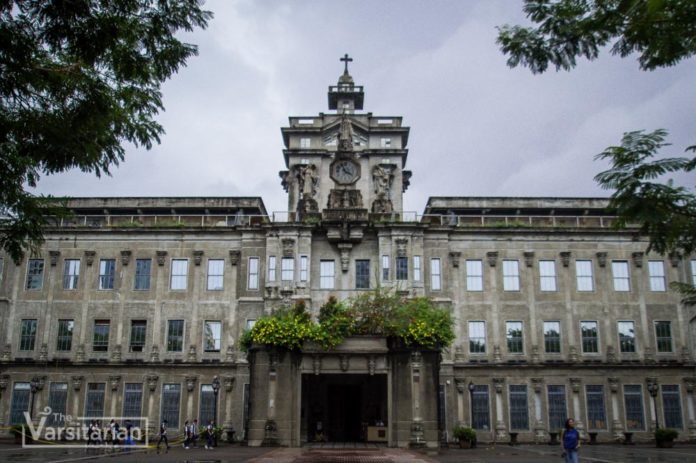
IF THE “Big One,” a 7.2-magnitude earthquake, occurs, can UST withstand it?
Civil Engineering department head Rodelio Tiburcio said all buildings inside the campus would be able to withstand a major temblor.
The Big One is categorized by the Philippine Institute of Volcanology and Seismology (Phivolcs) as “very destructive.” It will hit Metro Manila and other parts of the country if the West Valley Fault in Luzon moved.
He said there were no fragile buildings on campus as the buildings were carefully planned and constructed.
“Lahat ng structures sa UST, I can say wala akong nakikitang problema sa the Big One,” Tiburcio said.
Tiburcio, along with University engineers and the staff of the Facilities Management Office (FMO), inspected the structural integrity of all buildings inside the campus last April 23, a day after a 6.1-magnitude earthquake hit Metro Manila and some parts of Luzon.
No major damage was found in the buildings after the earthquake.
In an earlier report by the Varsitarian, Tiburcio said some surface cracks were found in the Beato Angelico Building during the inspection, but these were not “structural defects.”
Of all the buildings in the campus, the Main Building, which was inaugurated in 1927, has a “special feature” – it is composed of 40 separate and smaller structures, making it more resilient to earthquakes, he said.
“Kaya ng Main Building na mag-survive. I’m sure of that…[K]apag lumindol, ‘yong building na ‘yon (Main Building), it will act as individual units, which makes the response to earthquake somewhat calibrated to the load that it is carrying, as a smaller unit,” he said.
He explained that a building with a big mass could be affected by large tremors, thus the Main Building could be affected only by small forces because of its “unique” structure.
The Main Building, including its walls, was constructed using reinforced concrete, a composite material embedded with steel and has a high compressive strength, he added.
The newest building in the campus is the Buenaventura Garcia Paredes, O.P. Building, which has a capacity to hold 10,000 pound-force per square inch or PSI. The Main Building has 3,000-PSI capacity, Tiburcio said.
PSI is a measurement of pressure or force exerted on a surface per unit area. It also indicates the concrete strength of a building.
Although the concrete used in some old buildings on campus like the Main Building has less strength than those in the new structures, it would not be an “issue” so long as all buildings were designed to be earthquake-resistant.
Tiburcio assured the Thomasians that the engineers and the FMO were taking precautionary measures before a possible earthquake, such as maintaining the buildings’ structures to prevent deterioration. Beatriz Avegayle S. Timbang and Miguel Alejandro IV A. Herrera













